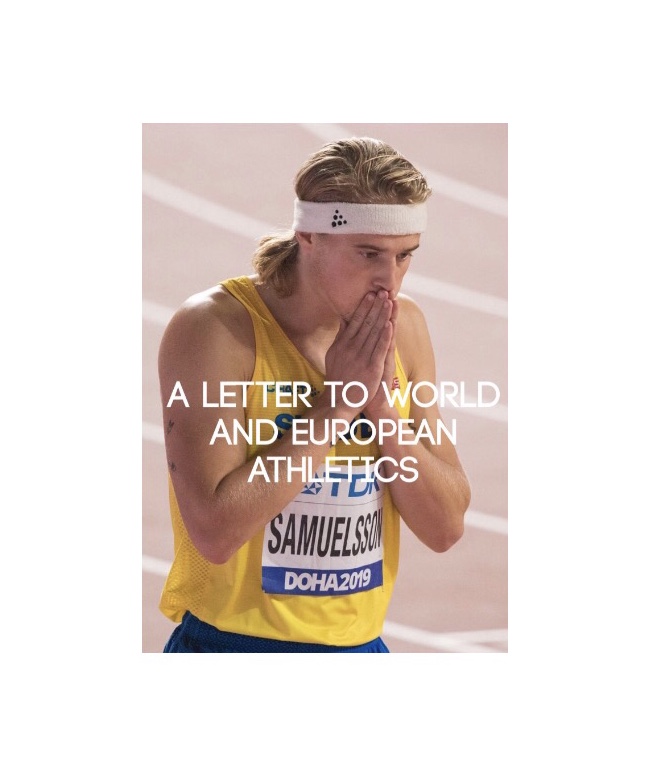Over 250 multieventers, including World and Olympic medallists, have supported a call for larger fields in the decathlon, heptathlon and pentathlon at major international championships.
The direction of travel on field sizes in the combined events is a longstanding concern. In 2018, when the qualification system for the 2020 Olympic Games was published, the great Hungarian decathlete Attila Zsivoczky was surprised and saddened to see that only 24 athletes were to be invited to each of the combined events.
He did a little research and identified how many athletes had participated in the combined events since 1988, the Games at which Jackie Joyner Kersee set her iconic heptathlon world record. The numbers have varied, with an average of 35, but the peak was the 2008 Games in Beijing, where over 40 athletes competed in both events.
| Heptathlon | Decathlon | |
| 1988 Seoul | 32 | 39 |
| 1992 Barcelona | 33 | 36 |
| 1996 Atlanta | 29 | 40 |
| 2000 Sydney | 33 | 38 |
| 2004 Athens | 34 | 39 |
| 2008 Beijing | 43 | 40 |
| 2012 London | 40 | 31 |
| 2016 Rio de Janeiro | 31 | 32 |
| 2020 Tokyo | 24 | 24 |
Those fields in Beijing included a young Andrei Krauchanka, who won the silver medal in the decathlon. They also included rising stars such as Oleksiy Kasyanov, Hannah Melnychenko (now Kasyanov), Antoinette Nana Djimou, Yana Maksimava; and Attila Zsivoczky himself, in his final Olympics.
Attila’s further examination of the figures recognised that the limit on overall numbers is one imposed by the IOC. It also highlighted that while the 78th best marathon runner in the world can be an Olympian, the 25th best multi-eventer in the world is unlikely to get a chance to represent their country at the Olympics.
Zsivoczky’s concerns are shared by combined event athletes around the world. Similar challenges are arising in other major competitions, such as World Championships and European Indoor Championships.
So on Monday 22 March 2021, the combined eventers of the world have made their voices heard. The Swedish decathlete Fredrik Samuelsson has written to World Athletics and European Athletics about field sizes. He is supported by over 250 combined eventers from over 40 countries, including Krauchanka, the Kasyanovs, Nana Djimou and Maksimava – the great athletes of the past 15 years standing shoulder to shoulder in support of the athletes of the future.
The letter sets out combined eventers’ concerns about field sizes, including the interaction with the world rankings system, and invites the governing bodies to work with them to find solutions to those challenges.
The athletes who support the initiative also include 2019 world decathlon champion Niklas Kaul, 2017 world bronze medallist Kai Kazmirek, 2016 European Champion Thomas van der Plaetsen, 2016 European bronze medallist Ivona Dadic, 2010 European silver medallist Eelco Sintnicolaas, 2019 European Indoor champion Jorge Ureña, 2018 World U20 champion Niamh Emerson, and 2019 European U20 champions Maria Vicente and Simon Ehammer.
You can find a copy of the letter and the full list of all 262 (at the time of writing – now 299) athletes in support here.
Upon receipt of the letter World Athletics said:
“Earlier today, World Athletics launched a project “The Global Conversation about the Future of Athletics” through which we asked to hear the opinions of stakeholders throughout the world about our sport and its future. We would like to engage with everyone in our community through this process as we shape the future direction of our sport. We are always willing to listen to our athletes and we look forward to doing so in this case. World Athletics has made a huge effort to continue to stage international competitions over the past year despite the challenges of the pandemic and we will continue to pursue further opportunities for all athletes to compete, especially for those in combined events.”
Decathletes of Europe will follow the progress of Fredrik and the other athletes in making their case. We will provide an update once the governing bodies have had a chance to consider the issues and have responded more fully.
Photo credit: Bjorn Paree


